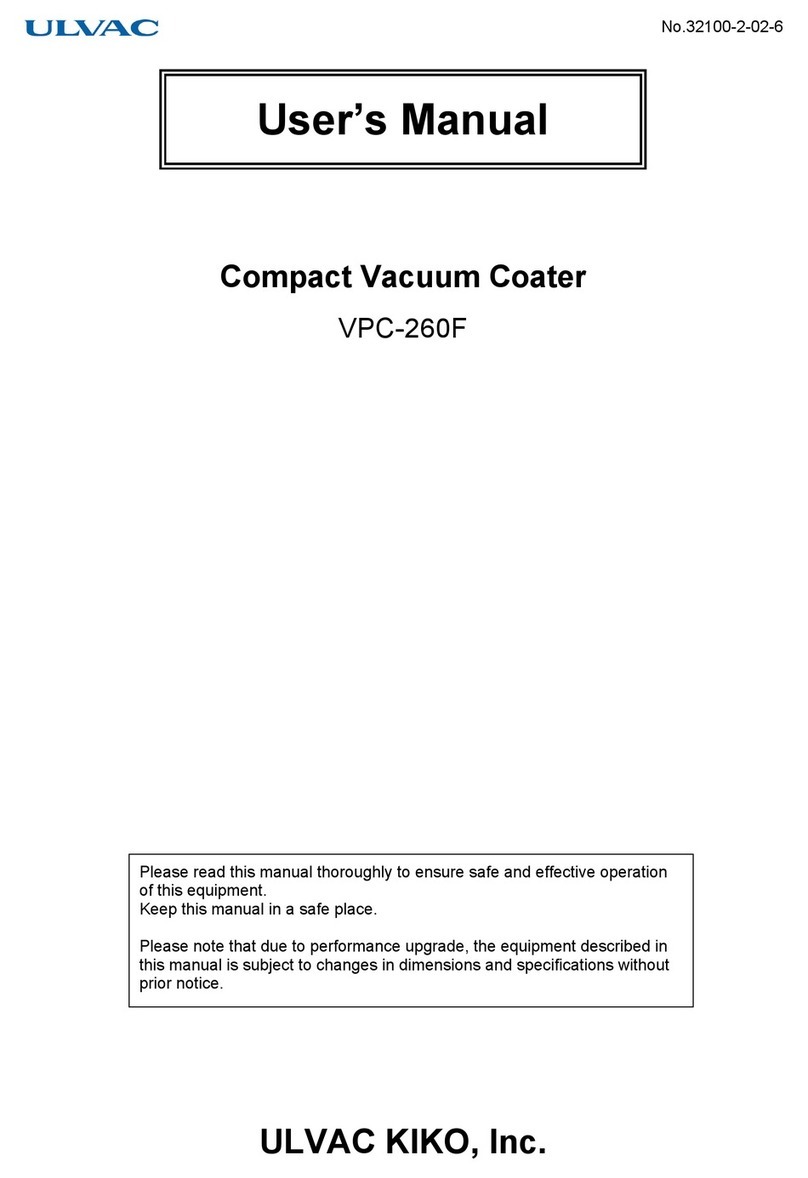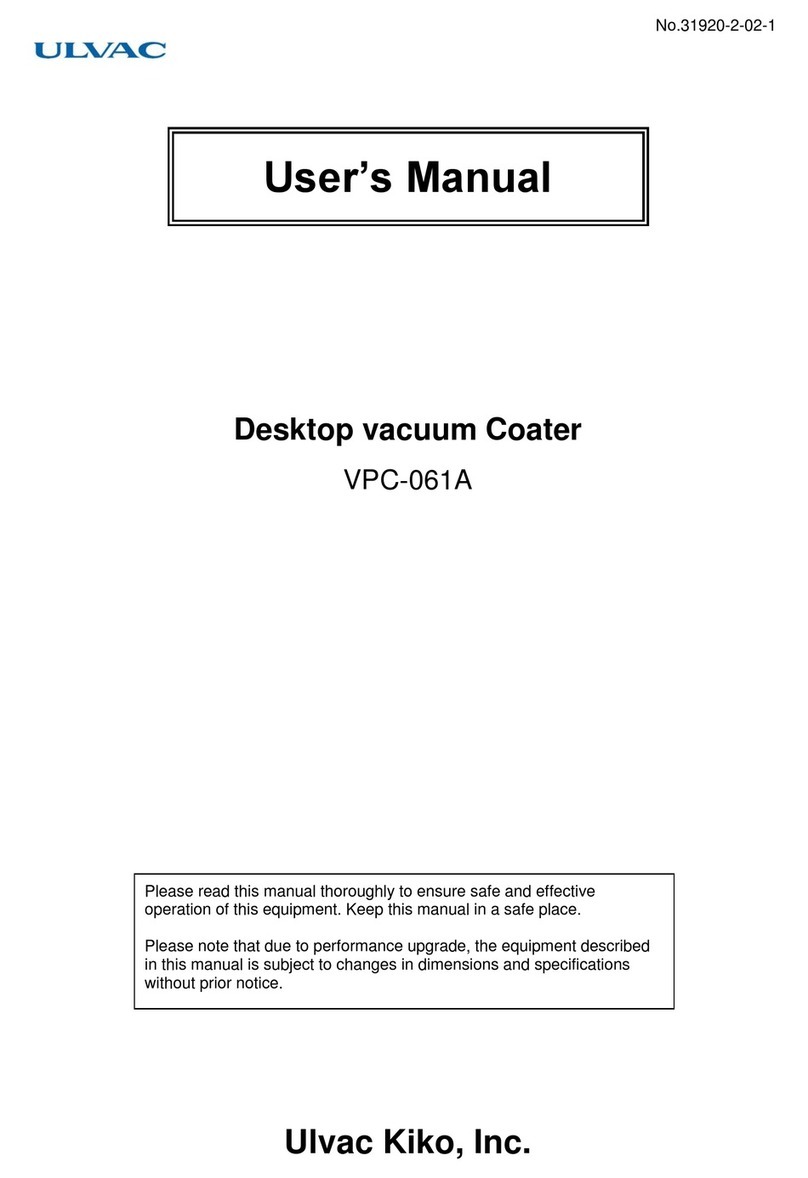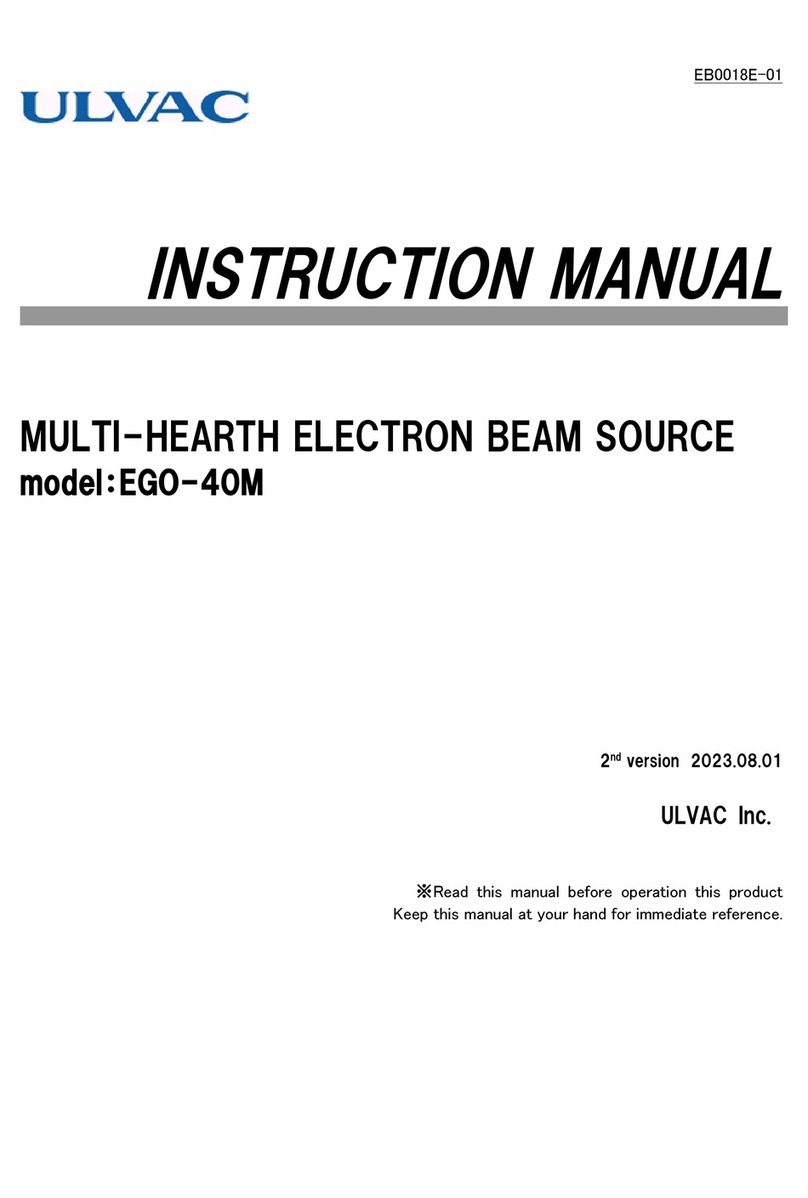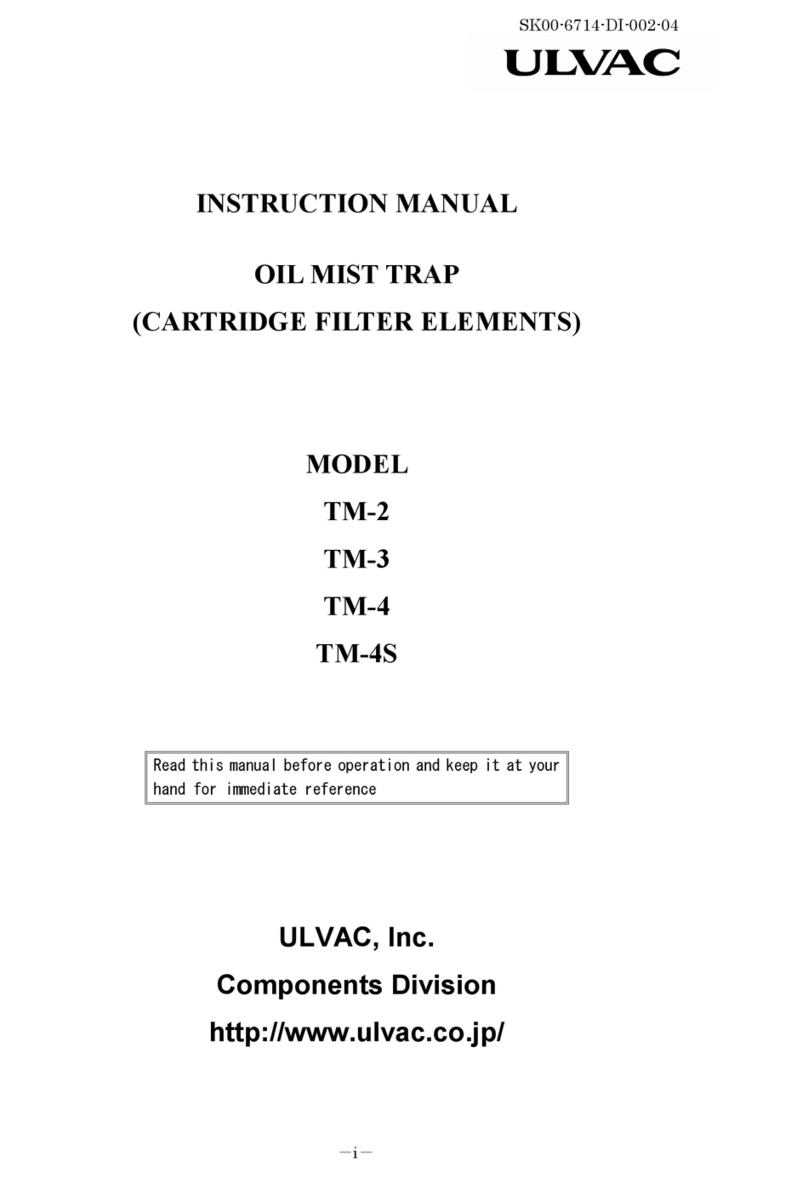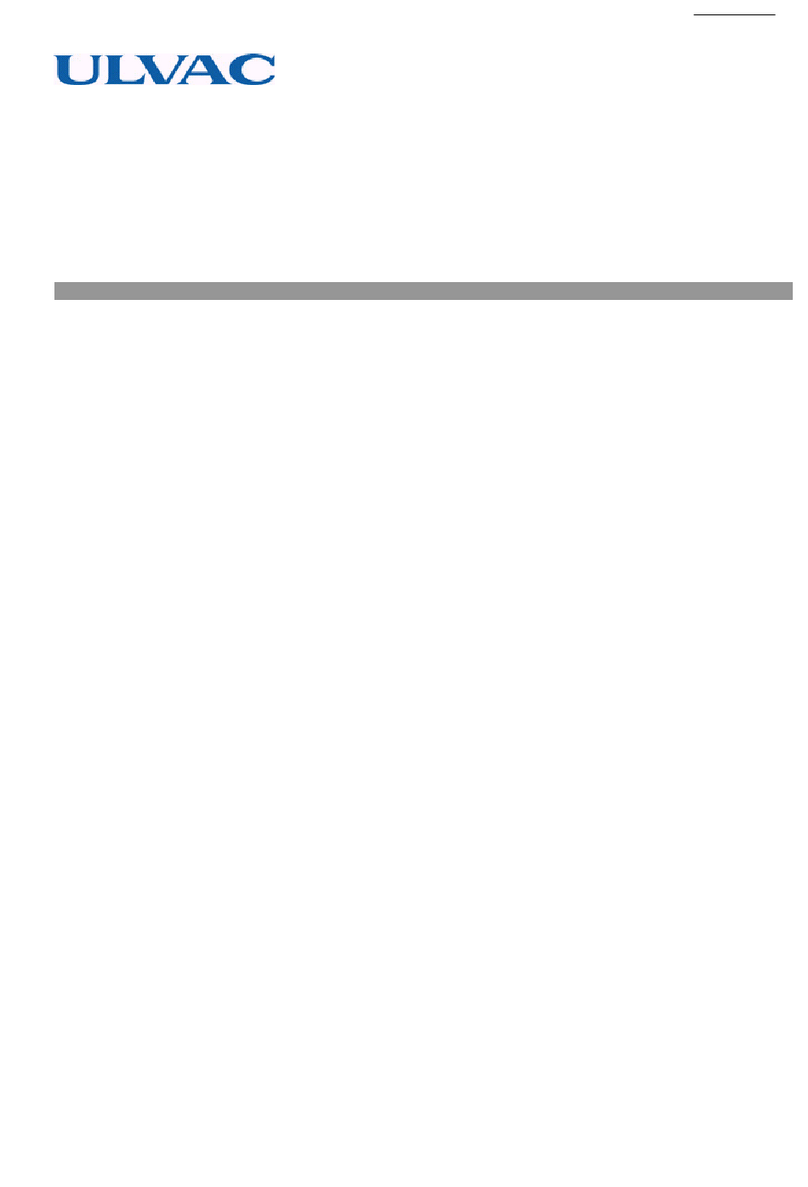
Contents
Page
0. INTRODUCTION....................................................................................01
0.1 Before Use of This Instrument............................................................01
0.2 Denotations in This Manual................................................................01
0.3 Safety Cautions...................................................................................03
0.4 Receipt and Storage of Oil Mist Trap.................................................03
0.4.1 Receipt of oil mist trap................................................................03
0.4.2 Storage, installation and environmental
conditions during operation ........................................................03
1. FOR SAFE OPERATION ..........................................................................1
1.1 Danger Inherent to This Instrument and Safety Measures....................1
1.1.1 DANGER Hazardous gas, hazardous material............................1
2. OVERVIEW OF OIL MIST TRAP............................................................1
2.1 Design Basis..........................................................................................1
2.2 Functions of Relief valve......................................................................1
2.3 Dimensional Drawing...........................................................................2
3. INSTALLATION .......................................................................................2
3.1 Installation.............................................................................................2
3.2 Installing the Unit on ULVAC KIKO Vacuum Pump..........................3
3.3 Installation and Removal ......................................................................3
4. PERFORMANCE OF OIL MIST TRAP................................................................4
4.1 Limit of Pump Operation Hours ...........................................................4
5. INSPECTION AND MAINTENANCE........................................... 5
5.1 Maintenance..........................................................................................5
5.2 Scheduled Inspection ............................................................................5
5.3 Consumables.........................................................................................6
5.4 Replacement of Element.......................................................................6
5.5 Troubleshooting....................................................................................9
6. DISPOSAL ...............................................................................................10
7. EXPLODED VIE .................................................................................10
WARRANTY
1. FOR SAFE OPERATION
1.1 Danger Inherent to This Unit and Safety Action
Before operating or checking this unit, carefully read this section and fully understand
potential hazards and preventive actions.
1.1.1
!
DANGER Hazardous gas, hazardous material
Hazard Preventive actions
You may be injured by
contact with pump oil
that has been turned
toxic in the oil mist trap
or with toxic substance
on the unit.
1) Put on protective wear a
ainst toxic
substances when inspecting the unit.
2) When repairin
the unit or discardin
toxic substances, have a wastes treatment
specialist render it non-toxic.
3) Have wastes disposed of b
authorized
waste treatment specialist.
2. OVERVIEW OF OIL MIST TRAP
2.1 Design Basis
The Model OMT-100A/OMT-200A oil mist trap separates oil mist discharged from
an oil rotary pump during operation to reduce the discharge of oil mist. The oil that
has collected in the oil mist trap is returned into the pump case. Being small in size,
light in weight, and simple in structure, the unit can be easily maintained and repaired.
Table.1 Design Basis
Model No OMT-100A OMT-200A
Name Oil mist trap
Weight (kg) 0.43 0.55
Outside dimensions (mm) 113 diameter ×135 H
Mounting position Vertical
Connecting screw G-1
2.2 Functions of Relief valve
Clogged element will narrow the flow path and increase the inner pressure of the
pump. If the inner pressure rises to 9.8×10-2MPa(G), the relief valve will
automatically be opened to prevent pressure rise.
-1-
